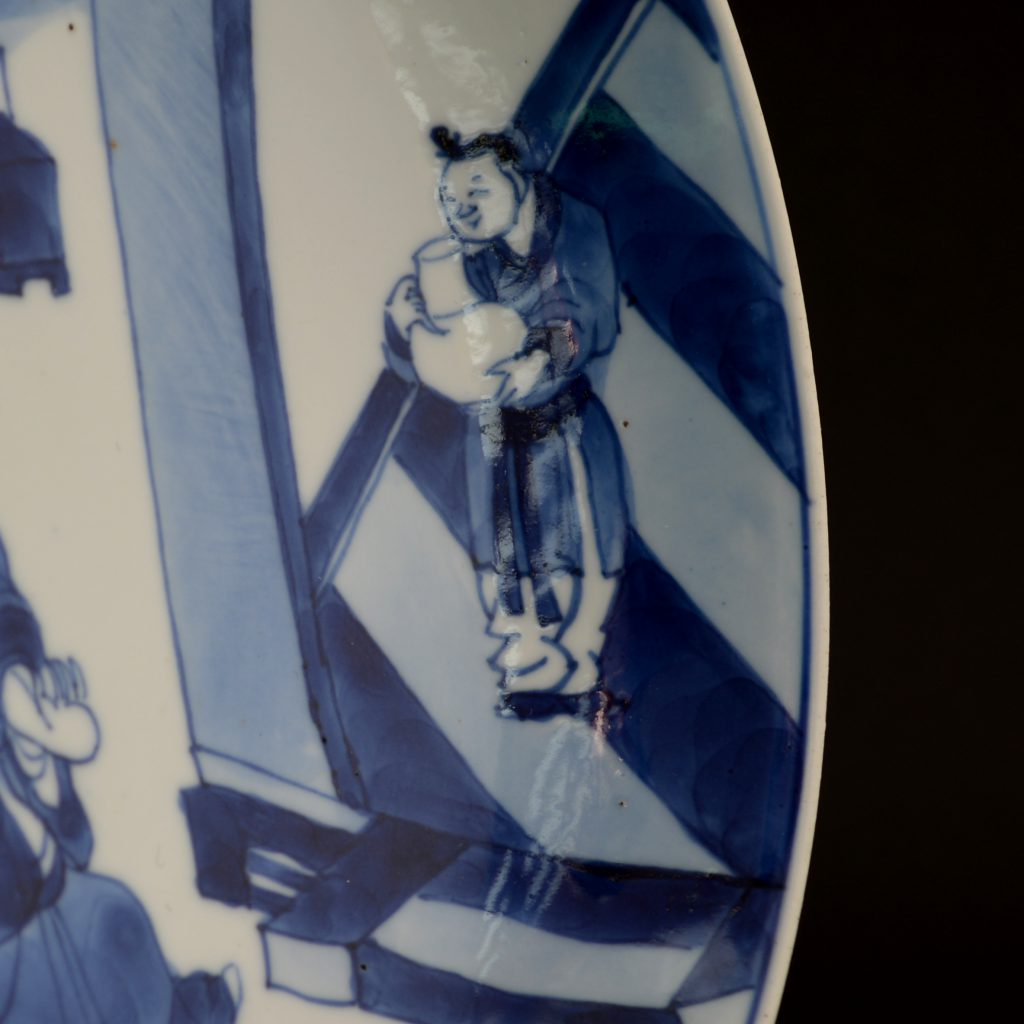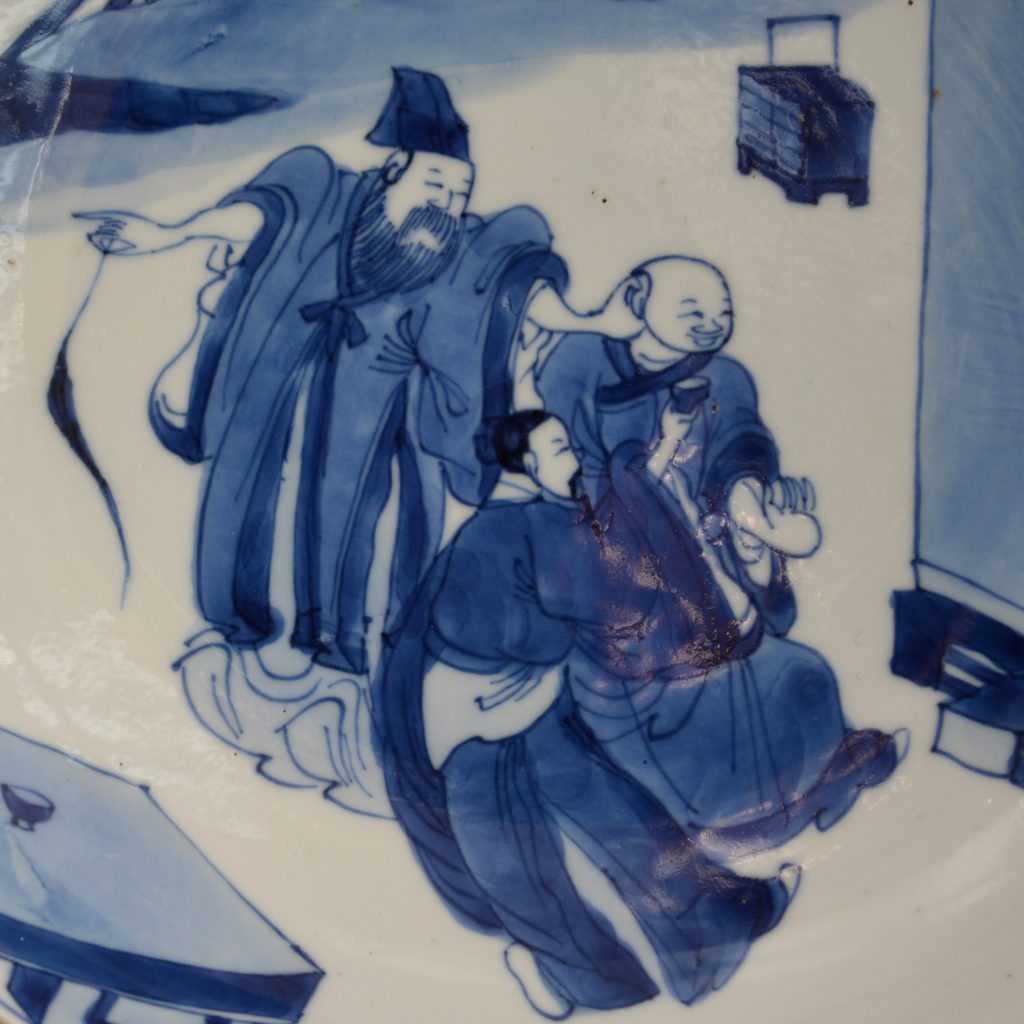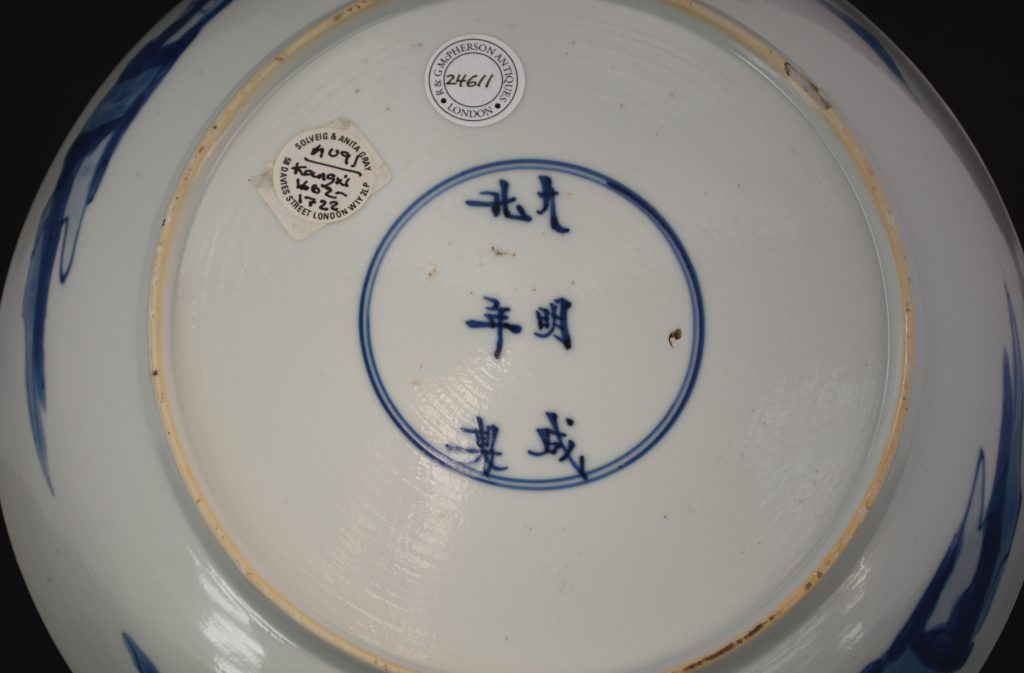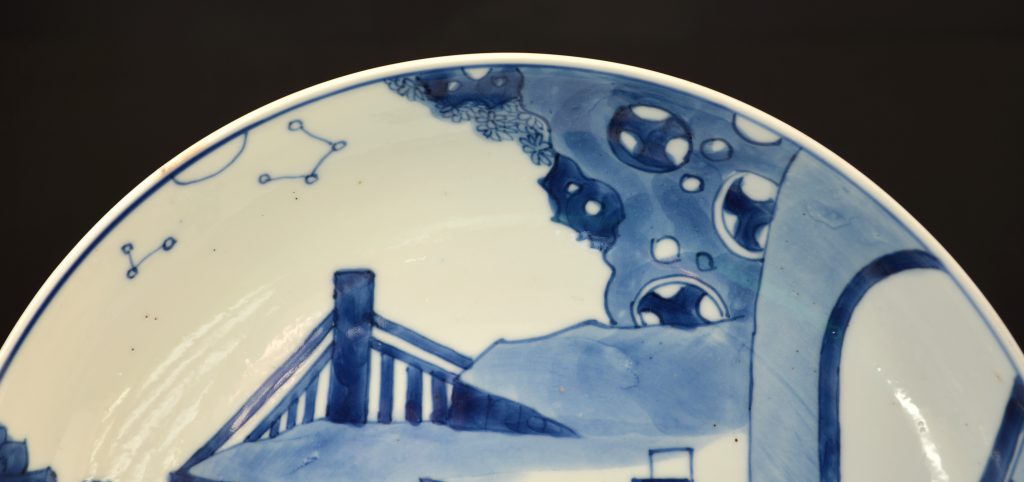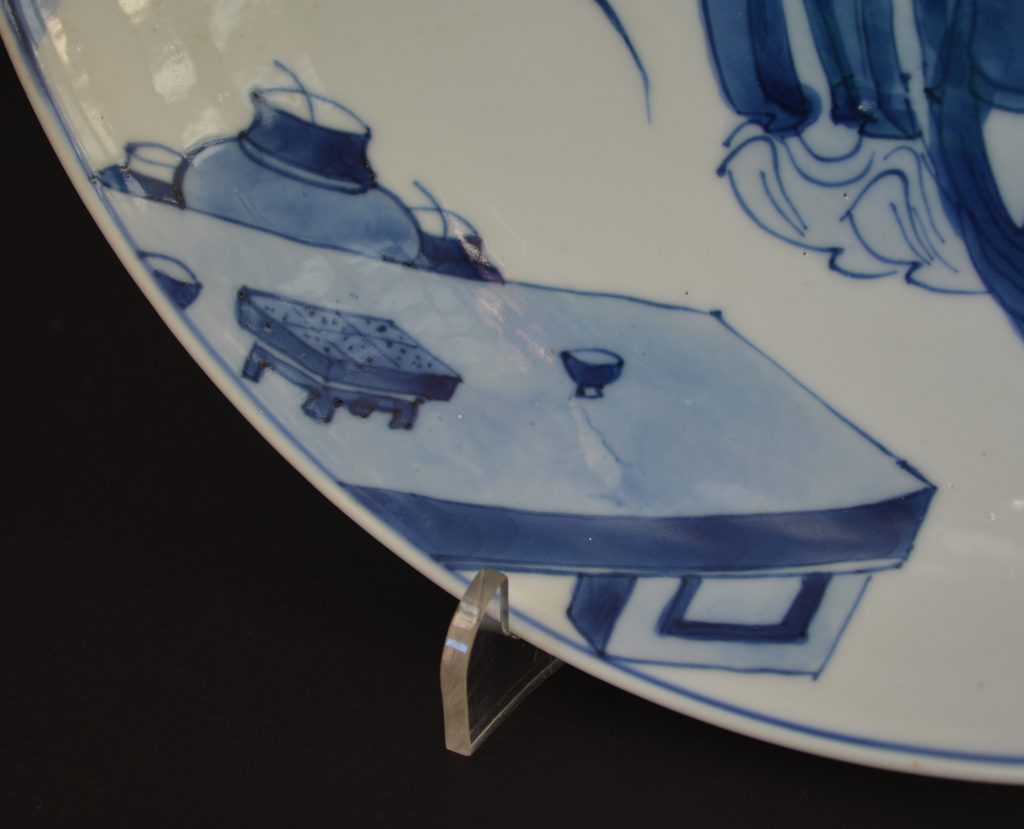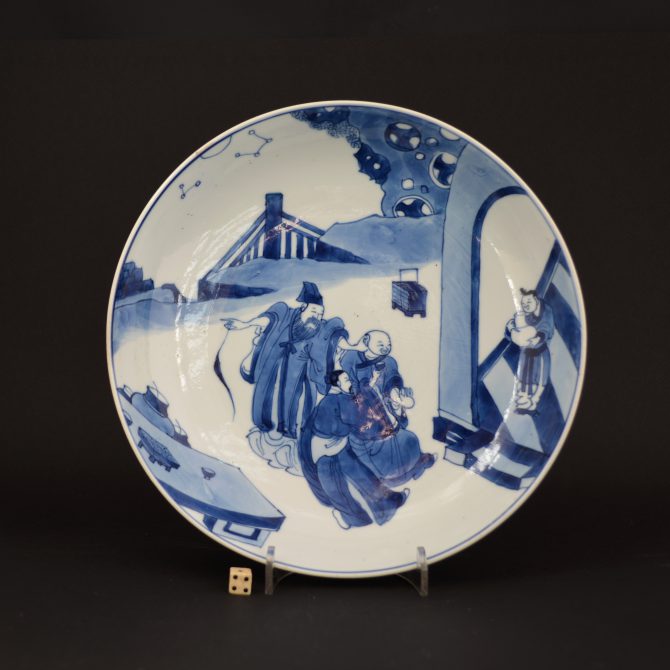
KANGXI 1662 – 1722 BLUE AND WHITE DISH
A Kangxi blue and white porcelain dish c.1690-1700 depicting Su Shi (1037 – 1101), Huang Tingjian (1045–1105), and the Monk Fo Yin. The base with an apocryphal Chenghua mark (1465-1487).
SOLD
- Condition
- there is a chip to the footrim.
- Size
- Diameter : 20.5 cm (8 inches)
- Provenance
- A private Far Eastern Collection.
- Stock number
- 24611
Information
Apocryphal Marks :
Apocryphal marks are frequently encountered on Kangxi Blue and White Porcelain, the mark of the Ming Emperor Chenghua who reigned from 1465 to 1487 being by far the most common, other Ming marks include Jiajing (1522-1566) and less frequently Wanli (1573-1620). These marks were not added to the piece to deceive, but more as a sign of reverence to earlier potters of the Ming dynasty (1368-1644). Occasionally they are used on pieces copying Ming Porcelain, these objects were probably made for collectors who could not afford the Ming original.
Su Shi (1037 – 1101), also known as Su Tungpo, was a Chinese writer, poet, painter, calligrapher, pharmacologist, gastronome, and a statesman of the Song dynasty. A major personality of the Song era, Su was an important figure in Song Dynasty politics, aligning himself with Sima Guang and others, against the New Policy party lead by Wang Anshi. Su Shi was famed as an essayist, and his prose writings lucidly contribute to the understanding of topics such as 11th-century Chinese travel literature or detailed information on the contemporary Chinese iron industry. His poetry has a long history of popularity and influence in China, Japan, and other areas in the near vicinity and is well known in the English speaking parts of the world through the translations by Arthur Waley, among others. In terms of the arts, Su Shi has some claim to being "the pre-eminent personality of the eleventh century." He is credited with creating dongpo pork, a prominent dish in Hangzhou cuisine.
Huang Tingjian (1045–1105) was a Chinese artist, scholar, government official, and poet of the Song dynasty. He is predominantly known as a calligrapher, and is also admired for his painting and poetry. He was one of the Four Masters of the Song Dynasty, and was a younger friend of Su Shi and influenced by his and his friends' practice of literati painting, calligraphy, and poetry.
The Story :
(my thanks to Mr Justin Li for identifying the subject matter and writing the following)
The three people are Su Dongpo (or Su Shi, the great Northern Song scholar, painter, poet, writer ....), Huang Tingjian (the great Northern Song schloar, a senior official and also a great poet of the time), and the monk is FoYin Monk, a Song famous monk who is a great master of the Buddhism philosophy in his capacity as the chief representative based in the Cheng Tian Temple in Jiangxi province, and also a rebellion figure who drank a lot, socialized with the higher society and also casually with mass average people a lot (befriending all kinds of society figures, including senior officials, poet, painters, scholars of all kinds).
the 3 of them socialized a lot and drank together a lot which is an anecdotal story well known. it's also interesting that Huang Tingjian and Foyin Monk all came from Jiangxi province where Jingdezhen is in, and Foyin was even born in the Fuliang County where later in the Yuan Dynasty the imperial set Fuliang as the center for making imperial porcelains in Jingdezhen.
it is believed that the 3 of them represented 3 philosophies / religions: Buddhism, Taoism and the Confucian school. the monk obviously for the Buddhism, and Huang Tingjian for Taoism and Su Dongpo as the great scholar was taken as representing Confucian school. Starting from Song Dynasty, the 3 schools of thinking began to interact with each other and step out of their own silos. The thinkings and philosophies began to mingle in new territories and they borrowed from each other instead of conflicting and disrupting which then contributed to the even greater developments and communications of the philosophies of all 3 kinds to the society and mass people. This is called 'the merge of the 3 schools' in Chinese, i don't know the exact English words for this historical trend.
'the merge of the 3 schools' became very popular and rising again in the late Ming period, understandably spurred by the unrest society and the relative freedom provided to the scholars class as there was no effective controls from government during that period. But also the merge was also greatly coinciding with the overall upgrade in average people's literacy levels and communications technologies developed (e.g. paper, books becoming accessible to average people).
